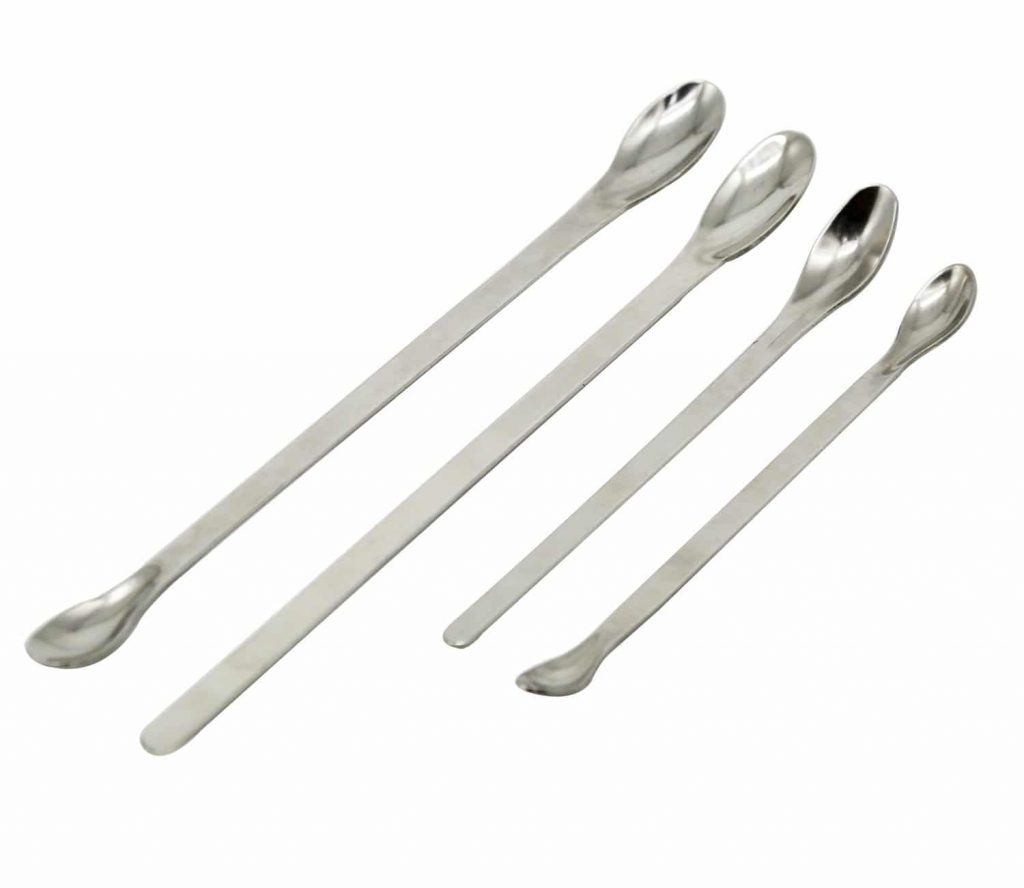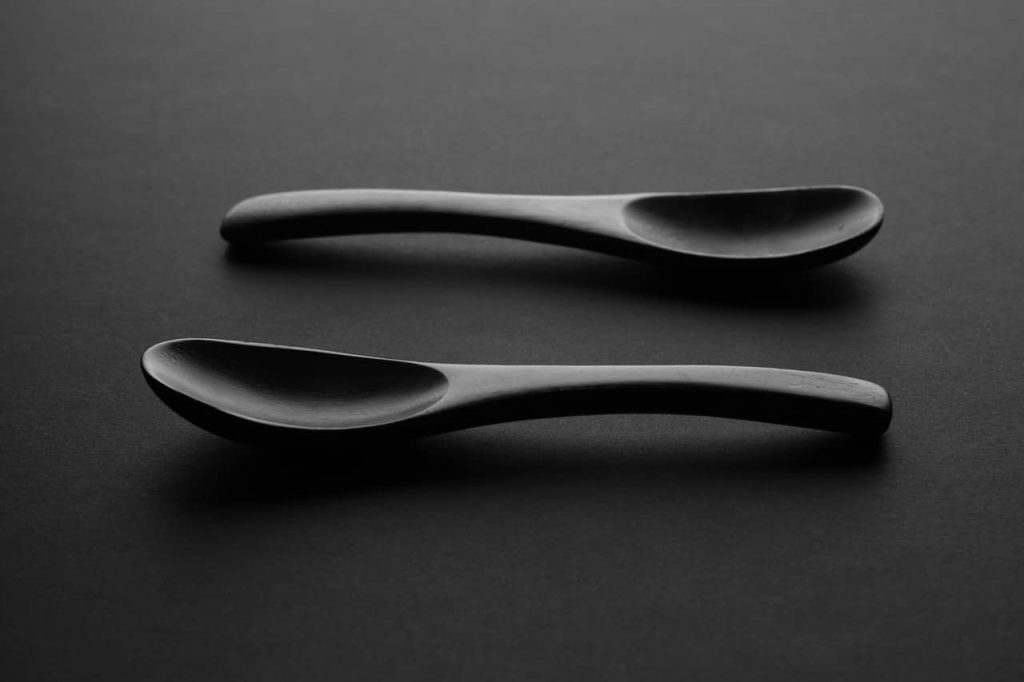

Tiny spoons often prove to be a curious find for parents, friends or family members who stumble upon their loved one’s “secret stash” of drug paraphernalia. The internet is littered with questions like: what are these tiny spoons with a bunch of white powder? Or why are the bottoms of all of my spoons black? The simple answer here is drug culture in the United States.
The short answer to these questions is that very small spoons can be placed under the nose for easy, sometimes discreet snorting of drugs through the nasal cavity. Typically, larger, bent metal spoons with burn marks on the bottom is clear evidence that someone has used the spoon to inject drugs via intravenous (IV) needles. We’ll go into more depth on the different types of drug paraphernalia that are commonly used in the culture of the drug world.

Tiny spoons can be used for drugs that can be snorted, like cocaine, meth, ecstasy or even heroin. Come to think of it, even prescription drugs like Xanax, opioids like oxycontin or Adderall can be crushed up and then snorted through the sinuses. People who use drugs often like snorting these substances because the psychoactive effects will begin much faster than when these drugs are ingested in pill form.
While the high might come on quicker from snorting drugs, this usually means the effects will also wear-off sooner. In the case of highly addictive drugs like methamphetamine or cocaine, this could compel the user to immediately seek out more of the substance, creating a vicious cycle which can effectively jump-start a mental or physical addiction to the chemical.
If you really want to find out how old your coke dealer is, ask them if they know what a “McSpoon” is. This item was a staple of McDonald’s restaurants throughout the 1960’s and 1970’s. The long plastic stick with a small scoop on one end and the infamous golden arches on the top was used to stir cream and sugar into your coffee. But quickly people in the drug culture figured out this small plastic spoon was a good way to snort cocaine. It was an easy way to measure cocaine as well. It reportedly held exactly 100 milligrams of cocaine. Throughout the 70’s and 80’s the term “McSpoon” was used by dealers as a slang term for 100mg of cocaine.

In the 1970’s, it is estimated that a whopping 11 percent of the adult population in the United States was using cocaine regularly. In 1971 President Richard M. Nixon began the war on drugs with his declaration that drug use was “public enemy number one”. In 1979, the DEA unveiled its Model Drug Paraphernalia Act to help end the sale of common drug utensils, like pipes, rolling papers and coke spoons. Many critics thought these drug paraphernalia definitions were vague and could include just about anything, given the right circumstances.
Smoke shops and various other vendors in the US were opposed to these laws and one member mocked the vague, broad overreach of the law. As a mockery he said: “This is the best cocaine spoon in town and it’s free with every cup of coffee at McDonald’s”. One person took this joke completely the wrong way. The president for the National Federation of Parent’s for Drug-Free Youth actually got the president of McDonald’s to agree to remove the spoon from all of their over 4,500 restaurants.
Another baffling find for someone who is unaware are their spoons being burnt black on the bottom, or simply their spoons will begin disappearing from the kitchen utensil drawer. Where did they go? If you happen to find black, burnt marks on your metal spoons, they have likely been used to mix a concoction of heroin, meth or other types of illicit or prescription drugs that can be injected with a hypodermic needle.
Once the crystal form of the drug is mixed with water and heated up, the liquid will be injected directly into the bloodstream with an IV needle. You may happen to find cotton balls, or Q-Tips, which are used to filter the concoction before injecting. Often a belt, or rubber hosing could be found along with needles and spoons.
Injecting drugs is incredibly detrimental to a person’s health and safety. Using needles to do drugs is arguably the most dangerous method of using drugs. Hypodermic needles can also lead to a full-fledged addiction at a rapid pace. Since the drug is injected directly into the bloodstream, the effects of the drug kick-in nearly instantaneously. This instant high could lead to a physical dependence and a psychological addiction to the substance before the user even realizes it. Often they won’t notice the addiction until they stop or try to quit using.

Withdrawal symptoms for all of the drugs people use with tiny spoons are extreme and could be dangerous. Meth, cocaine, heroin and all of the other drugs discussed in this article are highly addictive and in many cases they can be deadly.
If you suspect a loved one is using drugs and ultimately risking their lives for a substance you might want to seek help, before you confront them on the issue. If you feel that the time to confront them about their drug use is right away, please help them understand that help is available.
For many family members, co-workers or close friends, it may difficult to fully understand what they are going through. Attaching a negative stigma or personal judgement on someone who is struggling with substance abuse can ultimately discourage their willingness to change. Many addicts do not seek help for their substance use because they fear the negative judgement from their family, friends or the authorities.
Please call us today if you, or someone you love needs help. We are available 24/7 to take your private, confidential call.
We’re here for you:

